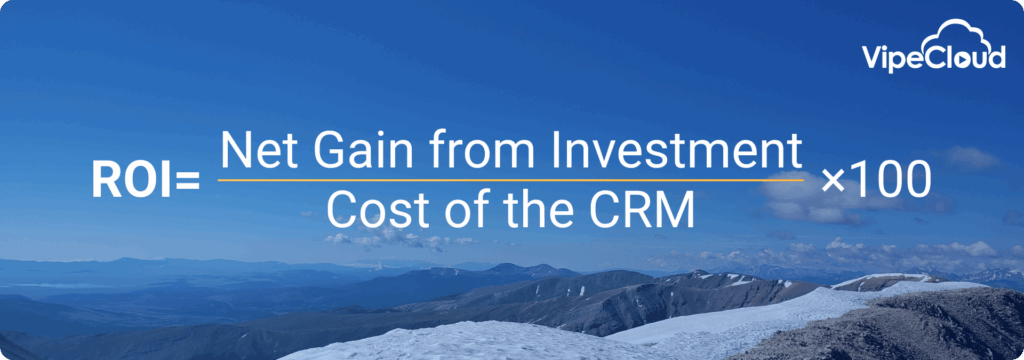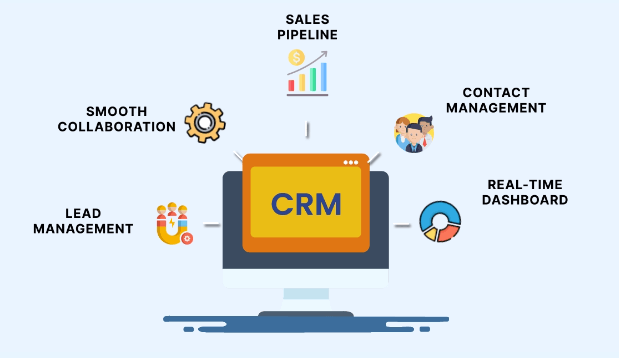
Unlocking Growth: Maximizing CRM Marketing ROI for Explosive Business Success
In today’s hyper-competitive business landscape, simply having a great product or service isn’t enough. To truly thrive, you need to cultivate lasting relationships with your customers, understand their needs, and tailor your marketing efforts to resonate with them on a personal level. This is where Customer Relationship Management (CRM) marketing comes into play. But it’s not just about having a CRM system; it’s about strategically leveraging it to achieve a strong Return on Investment (ROI). This in-depth guide will walk you through the intricacies of CRM marketing ROI, providing you with the knowledge and strategies to transform your CRM into a powerful engine for growth.
What is CRM Marketing? A Deep Dive
At its core, CRM marketing is a customer-centric approach that uses CRM software to manage and analyze customer interactions and data throughout the customer lifecycle. It’s about more than just storing contact information; it’s about using that information to personalize your marketing, improve customer service, and ultimately drive revenue. Think of it as a central hub where all customer-related information converges, allowing you to gain a 360-degree view of your customers.
CRM marketing encompasses a wide range of activities, including:
- Lead Generation: Identifying and attracting potential customers.
- Lead Nurturing: Building relationships with leads and guiding them through the sales funnel.
- Customer Segmentation: Grouping customers based on shared characteristics (e.g., demographics, purchase history, behavior).
- Personalized Marketing Campaigns: Tailoring marketing messages and offers to specific customer segments.
- Customer Service and Support: Providing excellent customer service to build loyalty.
- Sales Automation: Streamlining sales processes and improving efficiency.
- Marketing Automation: Automating repetitive marketing tasks, such as email marketing and social media posting.
By integrating these activities, CRM marketing helps businesses create a seamless and personalized customer experience, leading to increased customer satisfaction, loyalty, and, of course, a higher ROI.
Understanding CRM Marketing ROI: The Key Metrics
Measuring the ROI of your CRM marketing efforts is crucial to understanding their effectiveness and making data-driven decisions. It’s not enough to simply implement a CRM system; you need to track key metrics to see if your investment is paying off. Here are some of the most important metrics to monitor:
1. Customer Acquisition Cost (CAC)
CAC is the total cost of acquiring a new customer. This includes marketing expenses, sales salaries, and any other costs associated with bringing a customer on board. A lower CAC is generally desirable, as it indicates that you’re acquiring customers efficiently. To calculate CAC, use the following formula:
CAC = (Total Marketing & Sales Costs) / (Number of New Customers Acquired)
2. Customer Lifetime Value (CLTV)
CLTV is a prediction of the total revenue a customer will generate throughout their relationship with your business. It’s a crucial metric for understanding the long-term value of your customers. A higher CLTV indicates that your customers are valuable and likely to remain loyal. There are various methods for calculating CLTV, but a simplified formula is:
CLTV = (Average Purchase Value) * (Average Purchase Frequency) * (Average Customer Lifespan)
3. Conversion Rates
Conversion rates measure the percentage of leads or prospects who become customers. Tracking conversion rates at different stages of your sales funnel (e.g., lead to opportunity, opportunity to customer) helps you identify areas where your CRM marketing efforts can be improved. For instance, if your lead-to-opportunity conversion rate is low, you might need to refine your lead nurturing strategies.
4. Customer Retention Rate
Customer retention rate measures the percentage of customers who remain loyal to your business over a specific period. Retaining existing customers is often more cost-effective than acquiring new ones. A high retention rate indicates that your CRM marketing efforts are successful at building customer loyalty. The formula is:
Customer Retention Rate = ((Number of Customers at End of Period - Number of New Customers Acquired During Period) / Number of Customers at Start of Period) * 100
5. Sales Revenue
Ultimately, the success of your CRM marketing efforts is reflected in your sales revenue. Tracking sales revenue over time helps you understand the direct impact of your CRM initiatives on your bottom line. Analyze sales data by customer segment, marketing campaign, and other relevant factors to gain deeper insights.
6. Marketing ROI
Marketing ROI is a broad measure of the return on investment for your marketing spend. It takes into account all of your marketing costs and the revenue generated from those activities. The formula is:
Marketing ROI = ((Revenue Generated - Marketing Costs) / Marketing Costs) * 100
By consistently monitoring these metrics, you can gain valuable insights into the performance of your CRM marketing campaigns and make data-driven decisions to optimize your ROI.
Strategies to Maximize CRM Marketing ROI
Now that you understand the key metrics, let’s dive into the strategies you can employ to maximize your CRM marketing ROI. These strategies are designed to improve customer engagement, increase sales, and drive overall business growth.
1. Data-Driven Segmentation
Effective customer segmentation is the cornerstone of personalized marketing. By dividing your customers into distinct groups based on their demographics, purchase history, behavior, and other relevant factors, you can tailor your marketing messages and offers to resonate with each segment. This increases the likelihood of engagement and conversion. Your CRM system should provide tools to segment your customer base effectively. Analyze your data to identify the most valuable customer segments and prioritize your marketing efforts accordingly.
2. Personalized Email Marketing
Email marketing is a powerful tool for engaging with your customers and driving conversions. However, generic, mass-blast emails are a thing of the past. To maximize your ROI, personalize your email campaigns based on customer segmentation and individual customer data. Use dynamic content to tailor email messages to each recipient, including their name, purchase history, and interests. Implement automated email workflows, such as welcome emails, abandoned cart emails, and post-purchase follow-up emails. This enhances the customer experience and increases the likelihood of sales.
3. Targeted Advertising
Leverage the data in your CRM system to create targeted advertising campaigns on platforms like Google Ads and social media. Use customer segmentation to create custom audiences and target your ads to specific customer groups. For example, you can create a campaign targeting customers who have previously purchased a specific product or shown interest in a particular category. This increases the relevance of your ads and improves your conversion rates.
4. Lead Nurturing Campaigns
Not all leads are ready to buy immediately. Implement lead nurturing campaigns to build relationships with potential customers and guide them through the sales funnel. Use automated email workflows, content marketing, and other tactics to provide valuable information and address their needs. Nurturing campaigns help you stay top-of-mind and increase the likelihood of converting leads into customers. Tailor your nurturing campaigns to different customer segments and their specific pain points.
5. Sales Automation
Automate repetitive sales tasks, such as lead qualification, follow-up emails, and appointment scheduling, to improve sales efficiency and free up your sales team to focus on closing deals. Your CRM system should offer features for sales automation. Automating these tasks reduces the time it takes to close deals, increases sales productivity, and helps you generate more revenue.
6. Customer Service Excellence
Exceptional customer service is crucial for building customer loyalty and driving repeat business. Use your CRM system to track customer interactions, manage support tickets, and personalize your customer service interactions. Provide prompt and helpful responses to customer inquiries. A positive customer service experience increases customer satisfaction and encourages them to return to your business.
7. Mobile Optimization
Ensure that your CRM marketing efforts are optimized for mobile devices. Many customers access their email, social media, and other online content on their smartphones and tablets. Optimize your website, landing pages, and email templates for mobile viewing. This improves the customer experience and increases the likelihood of engagement and conversions.
8. Integration with Other Tools
Integrate your CRM system with other marketing and sales tools, such as email marketing platforms, social media management tools, and e-commerce platforms. This allows you to share data seamlessly between systems, automate tasks, and gain a more comprehensive view of your customer interactions. Integration streamlines your marketing and sales processes and improves your overall efficiency.
9. Continuous Testing and Optimization
CRM marketing is an ongoing process. Continuously test and optimize your campaigns to improve your ROI. Use A/B testing to experiment with different email subject lines, ad copy, and landing pages. Analyze your data to identify areas for improvement and make adjustments to your strategies accordingly. Regularly review your CRM data and make changes based on customer behavior and industry trends.
10. Training and Adoption
Ensure that your team is properly trained on how to use your CRM system and implement your CRM marketing strategies. Provide ongoing training and support to help them stay up-to-date on the latest features and best practices. Employee adoption is crucial for the success of your CRM initiatives. Make sure your team understands the value of CRM marketing and how it contributes to their success. This will lead to increased productivity and better results.
Choosing the Right CRM System
Selecting the right CRM system is a critical first step in maximizing your CRM marketing ROI. There are many different CRM systems available, each with its own strengths and weaknesses. Consider the following factors when choosing a CRM system:
- Features: Does the system offer the features you need, such as lead management, contact management, sales automation, marketing automation, and customer service?
- Scalability: Can the system scale to meet your future needs as your business grows?
- Integration: Does the system integrate with your existing marketing and sales tools?
- Ease of Use: Is the system easy to use and navigate?
- Cost: Does the system fit within your budget?
- Support: Does the vendor offer adequate support and training?
Research different CRM systems and compare their features and pricing. Read reviews and testimonials from other users. Consider a free trial or demo to test out the system before making a decision.
Common Pitfalls to Avoid
Even with the right strategies, there are some common pitfalls that can hinder your CRM marketing ROI. Avoiding these pitfalls will help you maximize your results.
- Poor Data Quality: Inaccurate or incomplete customer data can undermine your marketing efforts. Regularly clean and update your CRM data to ensure its accuracy.
- Lack of Integration: If your CRM system isn’t integrated with other tools, you’ll miss out on opportunities to automate tasks and gain a comprehensive view of your customer data.
- Ignoring Customer Feedback: Don’t ignore customer feedback. Use surveys, reviews, and other feedback mechanisms to understand your customers’ needs and preferences.
- Failure to Personalize: Generic, one-size-fits-all marketing messages are ineffective. Personalize your marketing efforts to resonate with individual customers.
- Lack of Training: Ensure that your team is properly trained on how to use your CRM system and implement your CRM marketing strategies.
- Not Measuring ROI: If you’re not tracking your key metrics, you won’t know whether your CRM marketing efforts are paying off.
- Setting Unrealistic Expectations: CRM marketing takes time and effort. Don’t expect overnight results. Be patient and persistent.
The Future of CRM Marketing ROI
The field of CRM marketing is constantly evolving. As technology advances, new opportunities emerge to improve customer engagement and drive ROI. Here are some trends to watch:
- Artificial Intelligence (AI): AI is being used to automate tasks, personalize marketing messages, and predict customer behavior.
- Machine Learning (ML): ML is being used to analyze large datasets and identify patterns that can be used to improve marketing performance.
- Hyper-Personalization: Marketing efforts are becoming increasingly personalized, with messages tailored to individual customer preferences and needs.
- Omnichannel Marketing: Businesses are using multiple channels to engage with customers, providing a seamless and consistent experience across all channels.
- Privacy and Data Security: As concerns about data privacy and security grow, businesses are focusing on protecting customer data and complying with regulations.
Staying ahead of these trends will be crucial for maximizing your CRM marketing ROI in the years to come.
Conclusion: Driving Sustainable Growth with CRM Marketing
CRM marketing is a powerful strategy for driving sustainable business growth. By understanding the principles of CRM marketing, implementing effective strategies, and continuously monitoring your ROI, you can transform your CRM system into a valuable asset that helps you acquire new customers, retain existing ones, and maximize your revenue. Remember to prioritize data-driven decision-making, personalize your customer interactions, and embrace the latest trends in the field. With a strategic approach to CRM marketing, you can unlock explosive business success and build lasting customer relationships.

